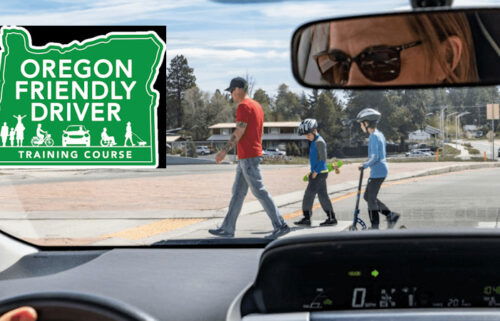These important tips can keep your Labor Day weekend boating trip safe

SALEM, Ore. (KTVZ) -- Labor Day weekend is always popular outdoors, and to keep things fun and safe, the Oregon State Marine Board suggests taking the time to plan your water getaway and stay safe with the following tips:
- Wear your life jacket. Each boat (including canoes and kayaks, inflatable boats, stand up paddleboards) must have a properly fitting life jacket for each person on board and at least one sound-producing device. Life jackets need to be in good shape and readily accessible – not under a hatch or in its packaging. All youth younger than 13 must wear a life jacket when in a boat that’s underway. This season, most of the victims of recreational boating fatalities were not wearing a life jacket.
- Know your waterway. “Be familiar with your surroundings and always watch where you are going,” says Ashley Massey, Public Information Officer for the Marine Board. “Stumps, deadheads and sand and gravel bars are prevalent this year and water levels are really low in a lot of locations. Start out slow and get your bearings.” Find out where there are reported obstructions and the recommended actions for safe navigation.
- Know what rules apply. “There are all types of watercraft on the market; some are considered boats and others are pool toys. Boats are designed differently, and by state law, have specific equipment requirements such as having enough properly fitted life jackets and a sound-producing device, like a whistle. Attach the whistle to your life jacket and you’re set.” Massey adds. “If you plan to float the river, keep in mind that pool toys are designed for use in a swimming pool, have no directional control, and can puncture easily. If you are planning a relaxing float, do so in a watercraft designed for the river; one which won’t easily puncture and comes properly equipped with a paddle so you can maneuver away from obstructions.” Any boat with a motor, even temporarily mounted, must be titled and registered. Paddlecraft 10 feet and longer are required to purchase and carry a Waterway Access Permit.
- Boat Sober. Boating is a great social activity, but the Marine Board encourages boaters and persons floating on the waterways, to leave the alcohol onshore. It’s safer for everyone. If arrested for Boating Under the Influence of Intoxicants (BUII), violators can be fined up to $6,250; can lose boating privileges for up to three years, and even serve jail time. Intoxicants include marijuana, illicit drugs, and even some prescription drugs.
- Sit on the seat inside the boat. Many boaters are tempted to ride on the swim platform, stern, sides, and the bow of unenclosed boats. The stern can be a dangerous place for exposure to carbon monoxide and a prop-strike safety hazard. It is illegal to ride on the bow, decks, gunwales, or transoms of a motorboat when the boat is underway. Sitting on designated seats is the safest option –especially when the boat is towing someone. Just because new boats have seats on the transom or swim step doesn’t make them legal.
- Slow down and keep scanning. Know the boating regulations for your area of operation. Always obey the “slow-no wake” buoys or signs. Boaters, including PWCs, are responsible for damage caused by their wake. Remember to slow down within 200 feet of a dock, launch ramp, marina, moorage, floating home or boathouse, pier, or swim float. Be courteous with one another and share the waterway. Paddlers should stay closer to shore, crossing busy channels at right angles only when it is safe and allow motorboats to pass in deeper water.
Marine officers will be enforcing slow-no wake zones and other boating laws. The top boating safety violations this summer involve life jackets, excessive speed, unsafe operation, failure to maintain a proper lookout, riding on the gunwales, deck or transom when a boat is underway, and overloading.
So far this year, there have been 22 recreational boating fatalities involving 10 motorized boats and eleven non-motorized boats. Only four of the victims were wearing life jackets; one did not fit properly, and the other incidents had other contributing factors.
For more information about equipment requirements, regulations, and ideas on where to go boating, visit the Marine Board’s website and ways to reduce your risk with these boating safety guidelines during COVID-19.
###
Definitions:
BOAT: All watercraft, including a seaplane on the water and not in flight, used or capable of being used as a means of transportation on the water. Exemptions include boathouses, floating homes, air mattresses, beach and water toys, or single inner tubes. “Boats” must be equipped with specific safety gear based on the type of boat and boat length. Stand up paddleboards are considered boats and must meet carriage requirements.
SLOW-NO WAKE: Operating a boat at the slowest speed necessary to maintain steerage and that reduces or eliminates waves that appear as white water behind the boat.



